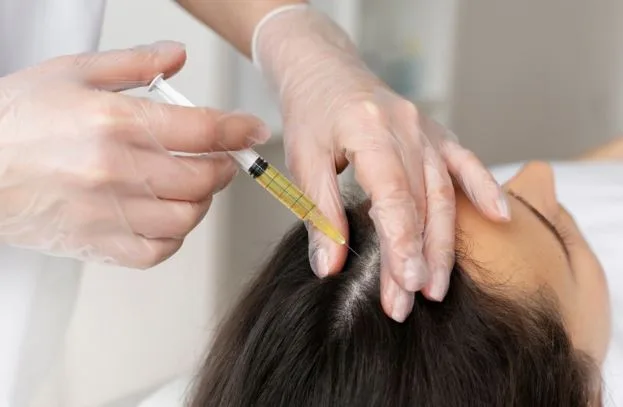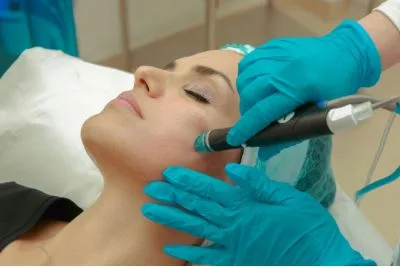Advanced Hair Revival with Exosome and Stem Cell Therapy
In the ever-evolving landscape of regenerative medicine, a promising solution is emerging for individuals battling hair thinning and pattern baldness: exosome and stem cell hair restoration. This innovative treatment is capturing the attention of patients and specialists alike for its potential to stimulate natural hair regrowth using the body’s own regenerative capabilities. With its minimally invasive nature and remarkable results, this approach is rapidly becoming a preferred alternative to conventional methods such as hair transplants or synthetic medications.
Understanding Hair Loss: A Common but Complex Problem
Hair loss affects millions of people across the globe, both men and women. The causes range from genetics and hormonal imbalances to stress, autoimmune diseases, poor nutrition, and aging. Traditional solutions such as minoxidil, finasteride, or surgical hair transplants often come with limited success or side effects. This gap in effective treatment options has paved the way for regenerative therapies like Exosome and Stem Cell Hair Restoration.
What Are Exosomes and Stem Cells?
Exosomes are tiny extracellular vesicles that are secreted by stem cells and other types of cells. They play a vital role in intercellular communication by carrying proteins, lipids, and RNA to nearby cells, essentially acting as messengers that promote healing, reduce inflammation, and stimulate regeneration.
Stem cells, on the other hand, are undifferentiated cells with the unique ability to transform into specialized cell types. In the context of hair restoration, mesenchymal stem cells (MSCs) derived from sources like adipose tissue or bone marrow are commonly used because of their regenerative potential.
When combined, exosome and stem cell hair restoration taps into a powerful synergy. Stem cells help form new follicles and repair damaged tissues, while exosomes enhance the process by delivering biological signals that accelerate hair follicle rejuvenation.
How the Procedure Works
The process of exosome and stem cell therapy for hair restoration is relatively straightforward but should always be conducted by trained medical professionals. Here’s an overview:
- Evaluation and Consultation: Patients undergo a thorough medical evaluation to determine the underlying cause of hair loss and whether they are suitable candidates for the procedure.
- Harvesting Stem Cells (If Needed): In some treatments, stem cells may be harvested from the patient’s own fat tissue or bone marrow. However, many modern approaches use commercially prepared stem cell-derived exosomes from safe and regulated donor sources.
- Injection of Exosome and Stem Cell Solution: The prepared solution is carefully injected into the scalp in the areas showing thinning or hair loss. Local anesthesia may be used for comfort.
- Post-Treatment Care: Patients are given specific instructions on aftercare, which typically includes avoiding strenuous activity for 24–48 hours and using gentle hair care products.
Benefits of Exosome and Stem Cell Hair Restoration
There are several advantages to choosing exosome and stem cell hair restoration over other conventional methods:
- Non-surgical: Unlike hair transplants, there are no incisions or stitches involved.
- Minimal Downtime: Most patients can return to normal activities within a day or two.
- Natural Results: The treatment stimulates your body’s own hair follicles to grow, resulting in natural-looking hair.
- Safe and Well-Tolerated: Since many treatments use autolosgous (your own) cells or rigorously screened donor exosomes, the risk of allergic reaction or rejection is minimal.
- Holistic Healing: The regenerative benefits extend beyond just hair growth. Many patients notice healthier scalp skin and reduced inflammation.
Ideal Candidates for the Procedure
While Exosome and Stem Cell Hair Restoration is suitable for many, not everyone will benefit equally. The ideal candidate is typically:
- In the early to moderate stages of hair thinning or balding
- In good overall health
- Not suffering from scarring alopecia or severe autoimmune conditions
- Looking for a natural and non-surgical alternative to hair restoration
A qualified provider will always perform diagnostic tests such as scalp analysis or bloodwork to ensure the treatment is appropriate.
Scientific Evidence and Clinical Success
Although still considered relatively new, numerous clinical studies and patient reports support the efficacy of exosome and stem cell therapy in promoting hair regrowth. Early studies have shown increases in hair density, thickness, and strength within 3 to 6 months after treatment. Moreover, the regenerative effects of exosomes continue to evolve, and ongoing research is likely to refine the protocols further and expand their applications.
Combining Therapies for Enhanced Results
Some providers integrate exosome and stem cell hair restoration with complementary therapies for maximum effectiveness:
- PRP (Platelet-Rich Plasma): Using the patient’s own blood plasma enriched with growth factors to further boost regeneration.
- Microneedling: Stimulates collagen and enhances absorption of injected or topical substances.
- Low-Level Laser Therapy (LLLT): Promotes blood circulation and cellular activity in the scalp.
These combinations can significantly improve treatment outcomes, especially for those with more advanced thinning.
Things to Consider Before Choosing This Treatment
As with any medical procedure, there are a few important considerations:
- Cost: Since the treatment is advanced and often not covered by insurance, it can be costly.
- Number of Sessions: Some patients may require multiple sessions over several months for optimal results.
- Provider Expertise: Success heavily depends on the skill and experience of the practitioner. Always choose a licensed clinic with proven results in regenerative medicine.
Future of Hair Restoration
Regenerative medicine is changing the game in aesthetics and wellness, and exosome and stem cell hair restoration is just the beginning. As science continues to evolve, we may see even more effective, targeted, and affordable solutions to combat hair loss.
Conclusion
Hair loss can significantly impact self-esteem and quality of life. Fortunately, advanced treatments like exosome and stem cell hair restoration offer a promising solution rooted in the body’s natural healing abilities. With growing evidence and increasing accessibility, more patients are turning to this regenerative option as a safe, effective, and minimally invasive way to reclaim their confidence.
If you’re struggling with thinning hair or early-stage hair loss, now might be the perfect time to explore how exosomes and stem cells can help you achieve lasting, natural regrowth.






